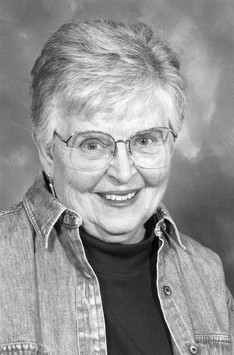Rabbitbrush Rambler: Earth Month

Designating 30 days as Earth Month seems inadequate. Even though I live in an apartment in a town, it is pretty obvious to me that the environment is a year-round concern for many of us in the San Luis Valley, the State of Colorado, the country, and six other continents.
Specific conditions are different in different parts of the world, but problems are going to get tougher everywhere. When settlement first began in the Valley, the human population of the entire world was a tiny fraction of today’s, and the population of the United States was just a little more than over 23 million. By 2017 the world’s population was 7.6 billion, and Colorado’s alone was more than 3 million. By 2050 the world’s population is estimated to be 10.5 billion, and Colorado’s will be pushing 8.5 or 9 million.
At present, agriculture occupies 50 percent of our planet’s land and uses 80 percent of its non-saline water, I have read. But despite shrinking available quantities of land and water in the world for growing populations, developing societies will want improved food and other conditions, like those in the Great Again USA. A lot is going to have to change, and fast.
Increasing heat is predicted to cause drastic changes in agriculture and human activities, and for wildlife too, by the way. Here in the USA, heat and drought will adversely affect California and Nevada and next the adjacent Western states, although it may take until the 2050s and 2070s to equally damage the Northern Great Plains and the Southern Great Plains respectively, according to an item in “The Week” (April 6).
Here in the Valley, when settlement began there was a great abundance of land and enough water much of the time for its users.
The history of this Valley shows how quickly conditions can change. As untilled and ungrazed land disappeared, water soon was getting organized, stored, distributed, and pumped, and towns and settlers and others kinds of development began to take up what had previously been vacant or vacated land.
All those events happened in little more than one century – a tiny drop in the bucket of human history as they also occurred throughout the West.
When I moved to rapidly-growing Colorado in the 1950s, a big drought was taking place, but I watered my yard in Colorado Springs to make it look nice and green like everyone else’s on the block, even though I fancied myself to be an environmentalist and a nature lover. (How that water was reaching the Front Range was another part of the long story.)
When I first saw center-pivot sprinklers from an airplane making round green fields on the brown prairie with water from the Ogallala Aquifer, I was amazed. But then I later saw sprinklers showering the windy air above this Valley a few years later, and I could not help but wonder why the water was not being pointed downward onto fields instead of up into the air where a lot of the water was evaporating. Acequias and other flood irrigation techniques were too labor-intensive, I figured.
Also, when I moved to the agricultural San Luis Valley in the 1970s, I discovered that farmers and ranchers and the town people did not always share the same interests and attitudes. By the 1980s, though, we were learning to get along by using the term “conservation,” instead of “farmer” and “rancher” or “environmentalist.” And we discovered there were a lot of very smart, friendly people on both sides of the fence, although some folks still clung to the way things used to be.
By 2000 we all had learned that the underground aquifer was getting lower and lower and the price of pumping water was getting higher and higher, and some of the sources weren’t always very healthy for fields, towns or other developments. Common interests forced us all to finally face up to some serious facts about the future.
Wherever we live on Earth, we are now in this new Anthropogenic Era, or whatever you choose to call it, with great problems and opportunities requiring new solutions. We all need to be thinking realistically about them during Earth Month and afterwards, too.



